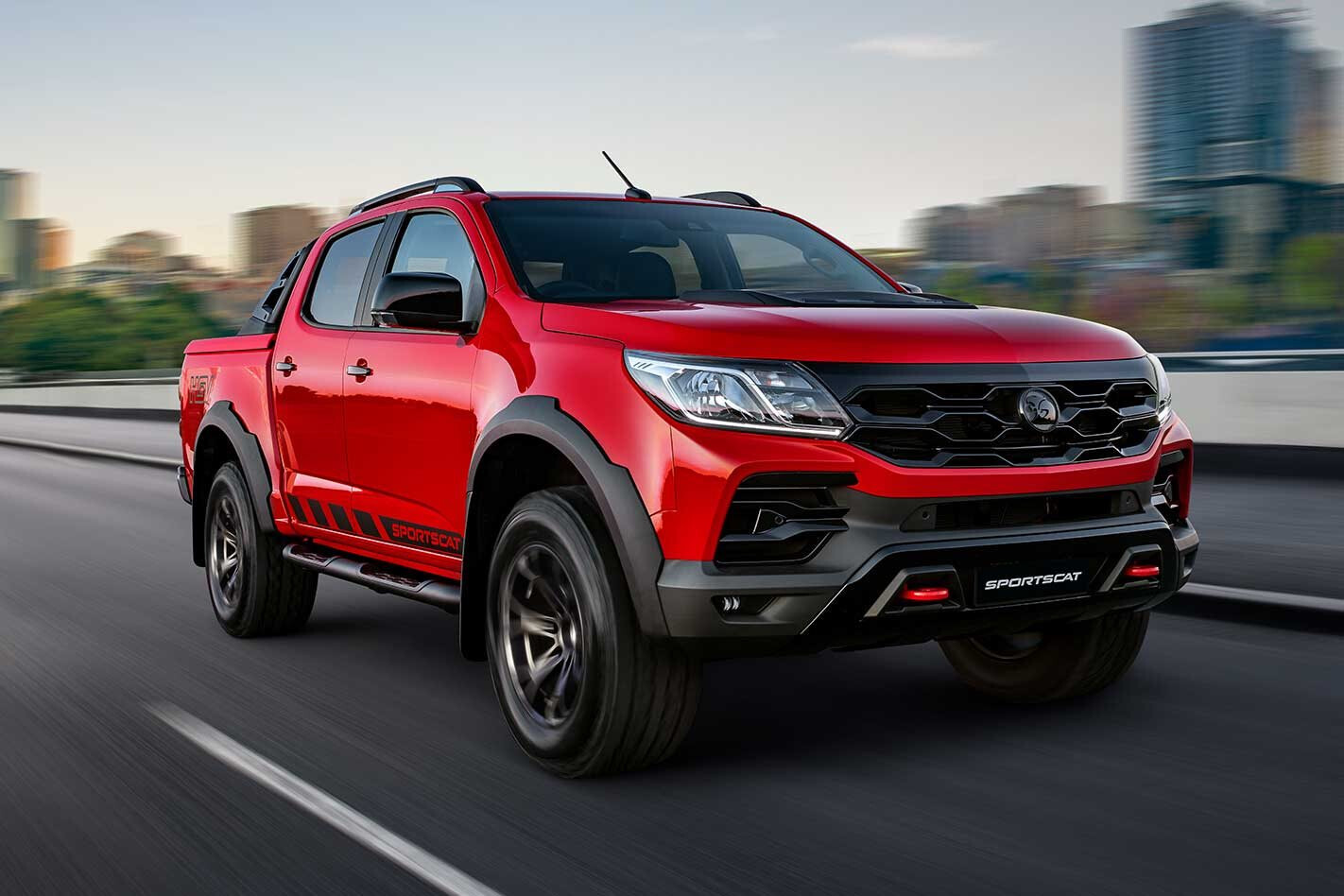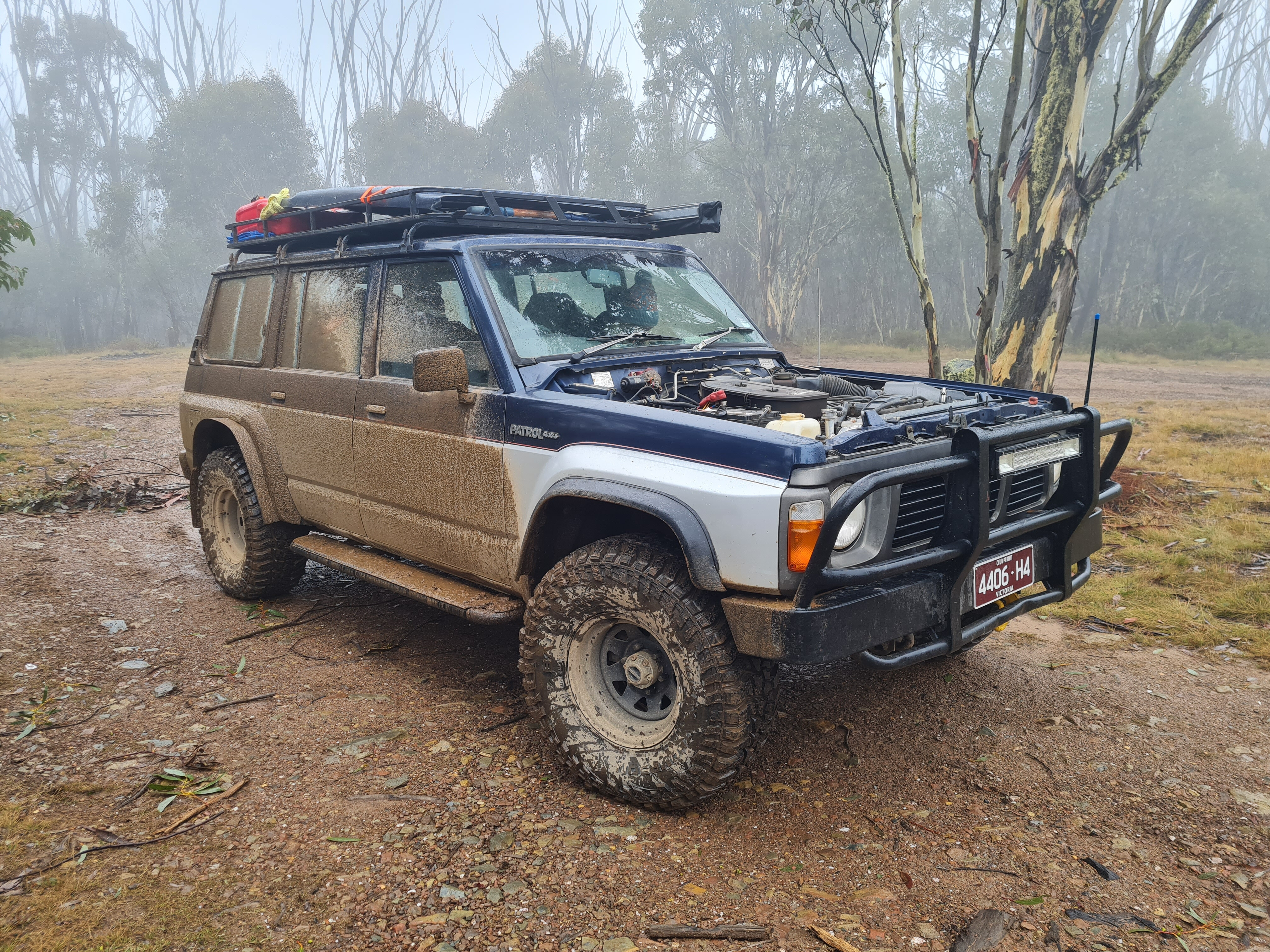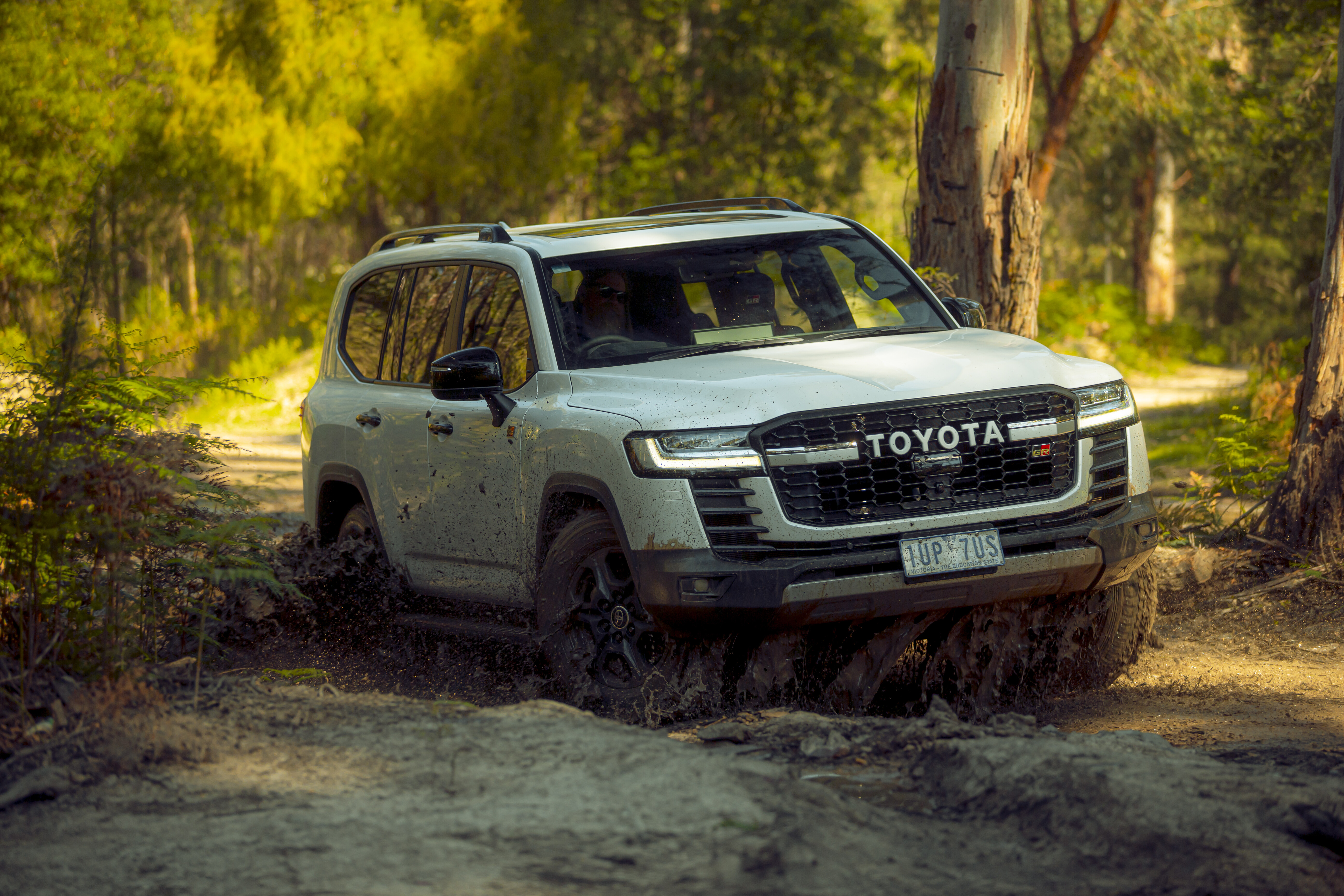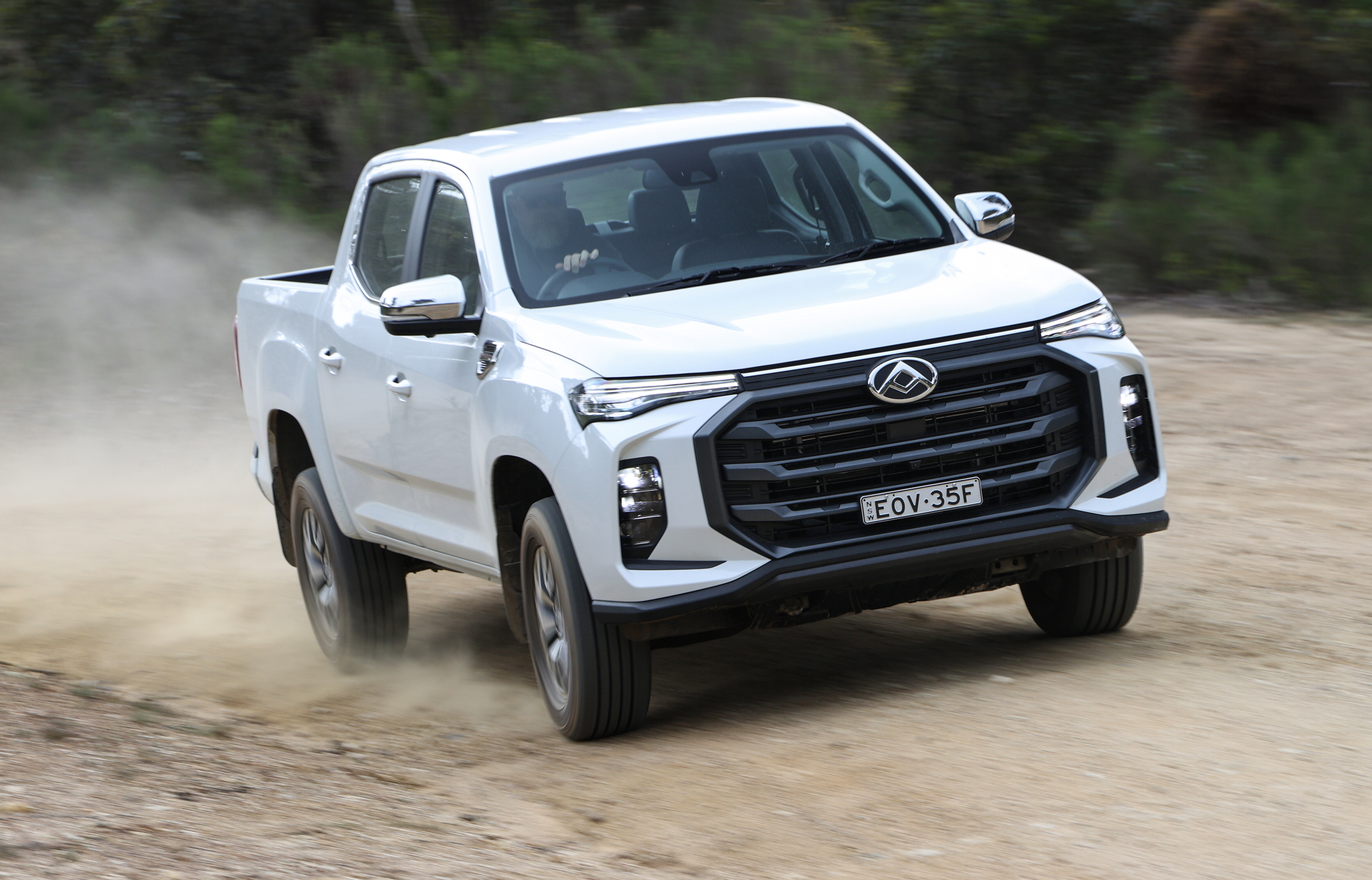SINCE the collapse of Holden on local shores, HSV has had to radically shift its business mindset. No longer able to rely on luring punters with its gruntier versions of the now-extinct Holden V8 Commodore sedan, one of HSV’s main projects is a dual-cab 4×4 ute with a 2.8-litre Duramax diesel engine. With LCV sales continuing to blossom in a declining overall new-car market, it’s hardly a surprise.
HSV imports the Z71 Colorado from Thailand in dressed-down form – steel wheels and basic front pews, for example – as it bins the unnecessary parts anyway. The all-Australian brand then turns the Z71 into the HSV SportsCat at its 18-month-old Clayton facility in Melbourne, Victoria.
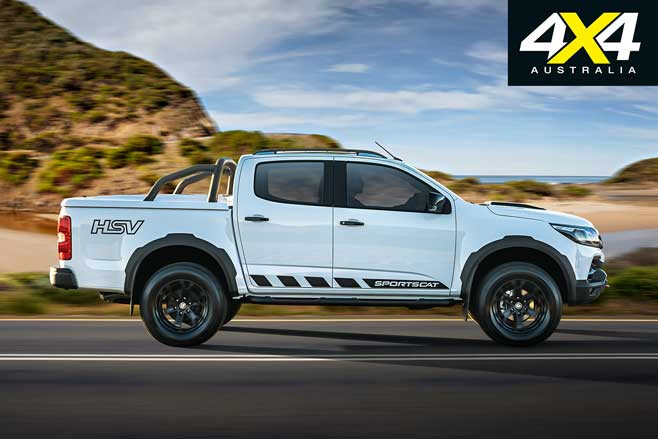
For this Series 2 update, this meant embracing the Series 1 SportsCat while turning the ‘aggression’ dial up even further. Gloss black treatment has been applied to the front grille and lower inserts – as was the case with the limited-run SportsCat RS – while there’s also a ‘for show only’ matte-black bonnet scoop. For the Series 2 SportsCat, HSV’s design team decided to scrap the subdued style option and offer the more radically stylised version only. This includes the chain-link design on the front grille, which is replicated on the fender flares and imprinted on the black tubular side steps.
New matte-black 18.0 x 10-inch split-spoke forged alloys wheels, which weigh just 12.6kg each, add to the exterior’s menacing appearance. These are wrapped in Cooper Tires Zeon LTZ Pro All-Terrains, developed by Cooper Tires USA specifically for HSV.
The Cooper rubber was built to offer a balance of on-road comfort and off-road readiness, while their overall rolling radius has lifted ride height by 20mm. When combined with an increase to the front spring height – up by 25mm – the overall ride height has been lifted by a total of 45mm. This wheel-and-tyre package, as well as a wider track, gives the SportsCat a brooding stance that is 30mm wider than its predecessor.
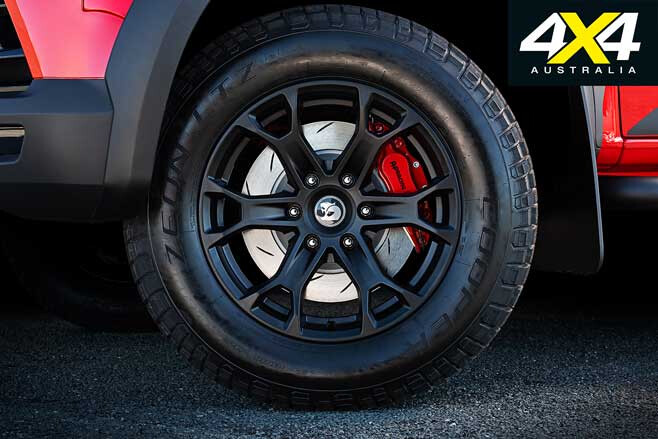
Holden, SportsCat and HSV branding is prominent throughout the vehicle, with the rear-end visually enhanced via a matte-black tailgate and matte-black sailplane. The hard tonneau features a quick-release mechanism, while the tailgate utilises an EZ-down strut to prevent bruised limbs and fingers.
The powertrain remains unchanged, with the SportsCat continuing to run a 2.8-litre turbo-diesel engine that’s good for 147kW/500Nm (auto) and 147kW/441Nm (manual). While both six-speed manual and six-speed automatic transmissions are offered, manual variants only account for two per cent of overall sales; however, as it doesn’t affect its bottom line, HSV is happy to continue offering cog-swapping variants.
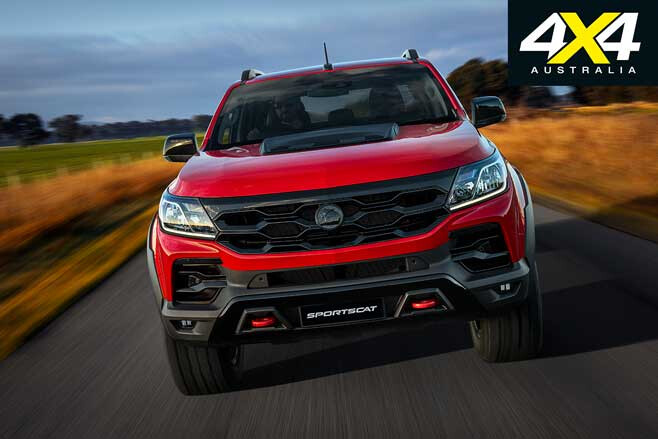
While HSV may be a brand synonymous with power and performance, striking that balance with the SportsCat – offering more power – was a matter of weighing up budgets and ever-stricter emissions regulations. After deliberation, HSV decided money was better spent elsewhere. However, a Walkinshaw ECU power hike is available for those desiring more performance – a 20 per cent improvement, in fact – and it can be installed by Walkinshaw at purchase, without voiding the new-car warranty.
A drive day at Holden’s Lang Lang proving ground on a drizzly winter’s day allowed us to stretch the new SportsCat’s legs on a variety of road surfaces. However, before even firing the Duramax donk to life, a few in-cabin improvements were obvious. Namely the snug, bolstered front performance pews embedded with Windsor suede inserts, and the fat, perforated steering wheel; both valid improvements and both feel great.
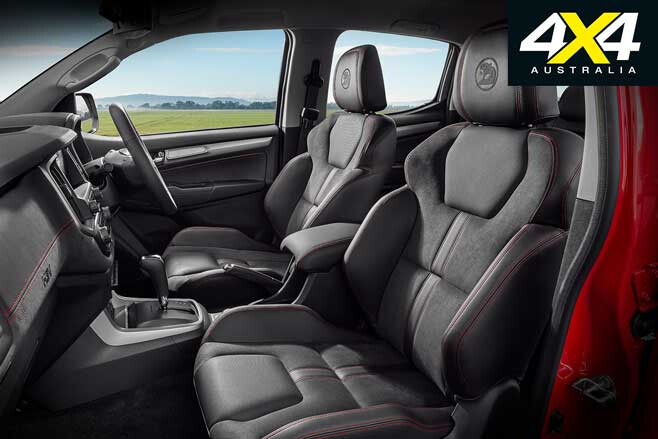
Under heavy braking and during high-speed cone work, the SportsCat remains surefooted, with body roll mitigated courtesy of the tweaks to the suspension and the addition of the rear anti-roll bar (SV only). Those bespoke tyres also excel on the bitumen, inspiring confidence to push the SportsCat through corners harder and faster; at times you forget you’re driving a dual-cab ute.
The SportsCat 2’s suspension set-up was tweaked to find a greater balance between road and dirt driving. This was achieved in part by increasing the front spring rate (to 110N/mm) and height (by 25mm), and tuning the MTV dampers (front and rear). Off-road capability has also been improved courtesy of improved approach (32°), breakover (27°) and departure (24°) angles, while ground clearance is now 251mm.
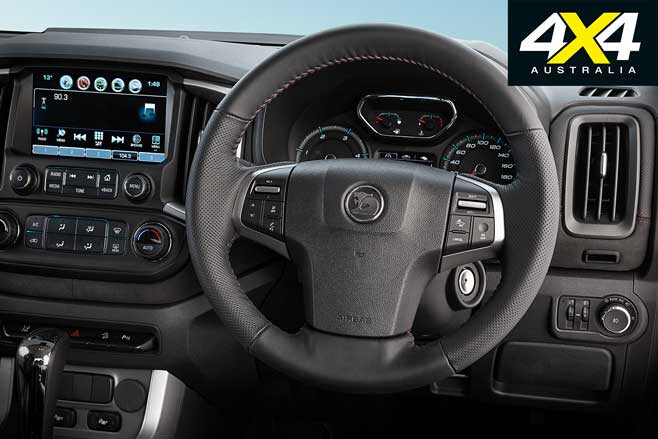
A quick spurt on Lang Lang’s off-road circuit, soaked due to recent rainfall, proved the SportsCat finds a great balance between on-road comfort and off-road prowess. It also provided the opportunity to experience the 22mm rear de-coupling anti-roll bar – standard on SV and optional on V – that disconnects when transitioning into 4WD Low and improves off-road control and manoeuvrability
HSV’s chassis engineer, Dave Kermond, explained to us on Lang Lang’s high-speed dirt road circuit that one of the most important and underrated inclusions was the addition of a larger master cylinder, a vital part of the brand’s AP Racing Brake Package. The updated master cylinder now measures 25.4mm (up from 22.8mm) and provides the driver with greater pedal feel and more assuredness with the vehicle’s stopping gear.
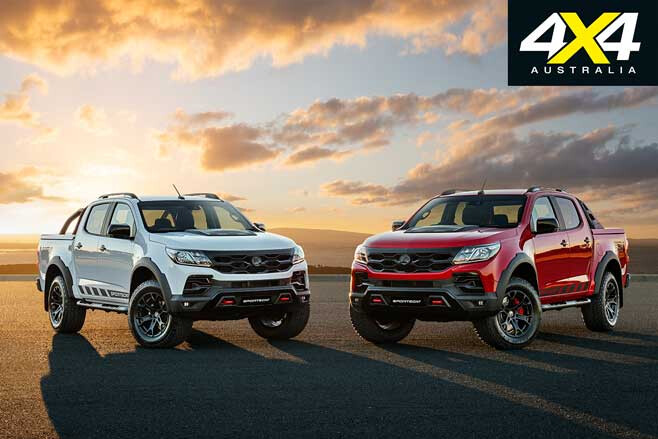
The AP Racing Brake Package also comprises four-piston forged calipers and 362 x 32mm front rotors. The package is only standard with the SV, but it can be added to the V at an extra cost. Due to the number of upgrades to the vehicle, HSV’s engineers also spent considerable time, both here and in the USA, recalibrating the SportsCat’s ESC system.
The SportsCat 2 mated with the six-speed auto has a payload capacity of 876kg (including passengers), while the manual has a capacity of 869kg. Pricing for the SportsCat V starts from $62,490 (manual) and $66,790 (manual) for the SV.


